

The Nuclear Weapon Archive - A Guide to Nuclear Weapons. Pendulum Waves. Physics. The Official String Theory Web Site. TOP TEN UNSOLVED PROBLEMS IN PHYSICS. College Physics. Atomic Test Effects in the Nevada Test Site Region. Thirty-one atomic fission weapons, weapon prototypes, or experimental devices were fired in Nevada from January 1951 to January 1955.
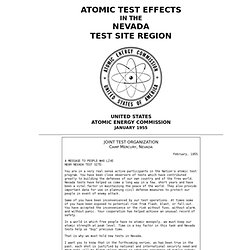
All were relatively small in explosive power. They ranged from less than one kiloton up to considerably less than 100 kilotons. (A kiloton is equal to 1,000 tons of TNT.) The forces released by test detonations in Nevada are very small compared to the tremendous forces released by the large fission and hydrogen weapons tested in the Pacific. So-called "H-bombs" are not tested in Nevada. Despite their relatively low yield, Nevada tests have clearly demonstrated their value to all national atomic weapons programs. Each Nevada test has successfully added to scientific knowledge needed for development and for use of atomic weapons, and needed to strengthen our defense against enemy weapons.
An unusual safety record has been set. The Oh-My-God Particle. By John Walker January 4, 1994 Fly's Eye The University of Utah operates a cosmic ray detector called the Fly's Eye II, situated at the Dugway Proving Ground about an hour's drive from Salt Lake City.
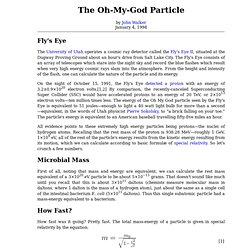
The Fly's Eye consists of an array of telescopes which stare into the night sky and record the blue flashes which result when very high energy cosmic rays slam into the atmosphere. From the height and intensity of the flash, one can calculate the nature of the particle and its energy. On the night of October 15, 1991, the Fly's Eye detected a proton with an energy of 3.2±0.9×1020 electron volts.[1,2] By comparison, the recently-canceled Superconducting Super Collider (SSC) would have accelerated protons to an energy of 20 TeV, or 2×1013 electron volts—ten million times less. All evidence points to these extremely high energy particles being protons—the nuclei of hydrogen atoms.
Microbial Mass How Fast? Alcubierre Warp Drive Time Travel. An Alcubierre Warp Drive stretches spacetime in a wave causing the fabric of space ahead of a spacecraft to contract and the space behind it to expand.
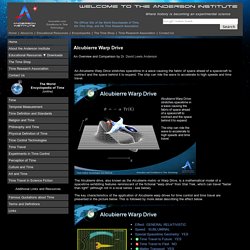
The ship can ride the wave to accelerate to high speeds and time travel. The Alcubierre drive, also known as the Alcubierre metric or Warp Drive, is a mathematical model of a spacetime exhibiting features reminiscent of the fictional "warp drive" from Star Trek, which can travel "faster than light" (although not in a local sense - see below). The key characteristics of the application of Alcubierre warp drives for time control and time travel are presented in the picture below. This is followed by more detail describing the effect below. Alcubierre Warp Drive Description. Physics envy. In science, the term physics envy is used to criticize a tendency (perceived or real) of softer sciences and liberal arts to try to obtain mathematical expressions of their fundamental concepts, as an attempt to move them closer to harder sciences, particularly physics.
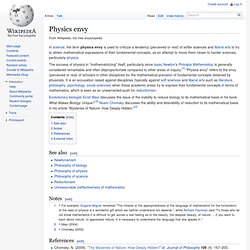
Evolutionary biologist Ernst Mayr discusses the issue of the inability to reduce biology to its mathematical basis in his book What Makes Biology Unique?. [2] Noam Chomsky discusses the ability and desirability of reduction to its mathematical basis in his article "Mysteries of Nature: How Deeply Hidden. "[3] See also[edit] Notes[edit] The laws list.
Einstein for Everyone. Einstein for Everyone Nullarbor Press 2007revisions 2008, 2010, 2011, 2012, 2013 Copyright 2007, 2008, 2010, 2011, 2012, 2013 John D.
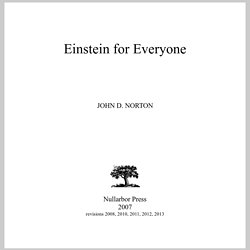
Norton Published by Nullarbor Press, 500 Fifth Avenue, Pittsburgh, Pennsylvania 15260 with offices in Liberty Ave., Pittsburgh, Pennsylvania, 15222 All Rights Reserved John D. An advanced sequel is planned in this series:Einstein for Almost Everyone 2 4 6 8 9 7 5 3 1 ePrinted in the United States of America no trees were harmed. Match Stick Rocket.
Match Stick Rocket SUBJECT: Rocketry TOPIC: Propulsion DESCRIPTION: A small solid propellant rocket is made from a match and a piece of aluminum foil.
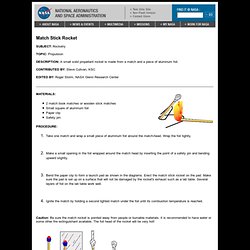
CONTRIBUTED BY: Steve Culivan, KSC EDITED BY: Roger Storm, NASA Glenn Research Center 2 match book matches or wooden stick matches Small square of aluminum foil Paper clip Safety pin Take one match and wrap a small piece of aluminum foil around the match-head. Perpetual Energy? Complicated Mechanisms Explained in simple animations - GadgetsWow.com. Author: admin Filed under: General Date: Aug 1,2010 Radial Engines Radial engines are used in aircrafts having propeller connected to the shaft delivering power in order to produce thrust its basic mechanism is as follows Steam engine Principle Steam engine once used in locomotives was based on the reciprocating principle as shown below Sewing Machine Maltese Cross Mechanism this type of mechanism is used in clocks to power the second hand movement.

Manual Transmission Mechanism. JoulesUniverse.gif (GIF-bilde, 1008x876 punkter) Researchers now able to stop, restart light. By William J.

Cromie Gazette Staff "Two years ago we slowed it down to 38 miles an hour; now we've been able to park it then bring it back up to full speed. " Lene Hau isn't talking about a used motorbike, but about light – that ethereal, life-sustaining stuff that normally travels 93 million miles from the sun in about eight minutes. Less than five years ago, the speed of light was considered one of the universe's great constants. Albert Einstein theorized that light cannot travel faster than 186,282 miles per second.
Hau, 41, a professor of physics at Harvard, admits that the famous genius would "probably be stunned" at the results of her experiments. Atomic Weapon. Time Travel Research Center © 2005 Cetin BAL - GSM:+90 05366063183 - Turkey/Denizli Atomic Weapon - Atom bombası Diagram-1 Diagram -2 Diagram-1 Stabilizing Tail Fins Tail cone Air inlet tubes Air pressure detonator Lead Shield container Detonator arm Detonating head Conventional Explosive Charge (cordite) Uranium-235 "Bullet" (ca. 24 kg, 16 cm long, 10 cm diameter) gun cylinder (not drawn to proportion: it was 180 cm long, with an inner diameter of 10 cm) Uranium-235 "Target" (ca. 36 kg) with receptacle (neutron reflector is just above) Archie radar altimeter antenna (4xAPS-13) Fuses (inserted to arm bomb just before dropping it) Diagram-2 The Fat Man atomic bomb being readied on Tinian The initial design for the plutonium bomb was also based on using a simple gun design (known as the "Thin Man") like the uranium bomb.
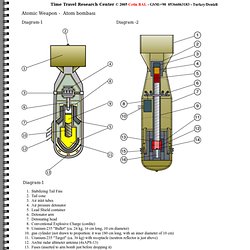
Fat Man Specifications Interior of the Fatman bomb. Hubbard's comments on the bogeyman of the time - the atomic bomb - are unintentionally hilarious. Fusion.